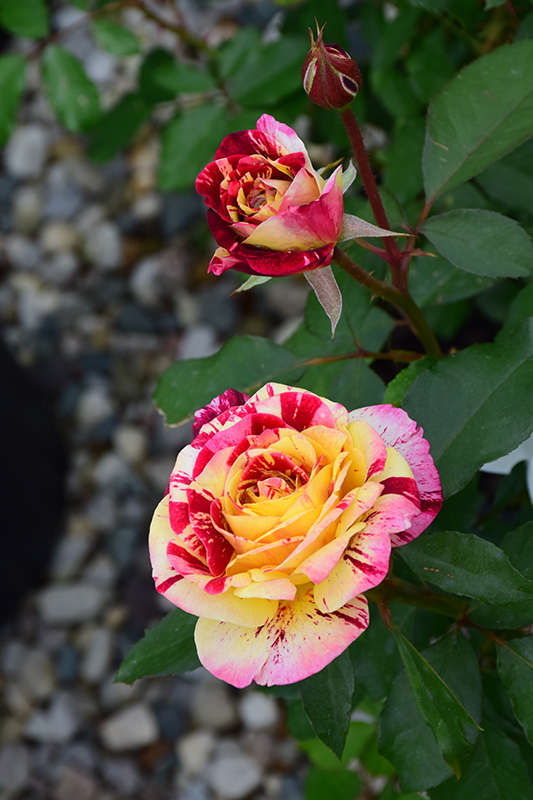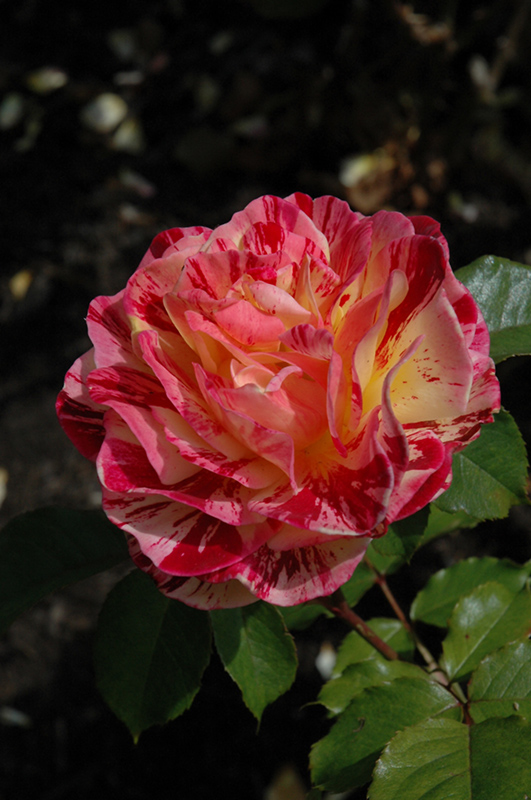Rose (Floribunda), George Burns Rosa 'WEKcalroc' Height: 4 feet Spread: 4 feet
Sunlight:
Hardiness Zone: 3b Group/Class: Floribunda Rose Description: Striking red streaks and spots stand out on pale yellow flowers that mature to cream; visually stunning in the landscape; more yellow in cooler temperatures; an exciting addition to the garden or patio; fertilize regularly. Ornamental Features Rose (Floribunda), George Burns features showy fragrant yellow flowers with creamy white overtones, gold eyes and red streaks at the ends of the branches from late spring to mid fall. The flowers are excellent for cutting. It has dark green deciduous foliage. The large oval compound leaves do not develop any appreciable fall color. Landscape Attributes Rose (Floribunda), George Burns is a multi-stemmed deciduous shrub with an upright spreading habit of growth. Its average texture blends into the landscape, but can be balanced by one or two finer or coarser trees or shrubs for an effective composition. This shrub will require occasional maintenance and upkeep. Trim off the flower heads after they fade and die to encourage more blooms late into the season. It is a good choice for attracting bees to your yard. Gardeners should be aware of the following characteristic(s) that may warrant special consideration; Rose (Floribunda), George Burns is recommended for the following landscape applications; Planting & Growing Rose (Floribunda), George Burns will grow to be about 4 feet tall at maturity, with a spread of 4 feet. It tends to fill out right to the ground and therefore doesn't necessarily require facer plants in front. It grows at a medium rate, and under ideal conditions can be expected to live for approximately 30 years. This shrub should only be grown in full sunlight. It does best in average to evenly moist conditions, but will not tolerate standing water. This plant should be periodically fertilized throughout the active growing season with a specially-formulated acidic fertilizer. It is not particular as to soil type, but has a definite preference for acidic soils. It is highly tolerant of urban pollution and will even thrive in inner city environments. This particular variety is an interspecific hybrid. Special Attributes Pre-spring Cleanup Late January into February cut back to about 24 inches tall. Remove criss-crossing canes, thin out a fifth of the older canes, remove dead or weak canes , clean up any damage, open up the center of Floribunda Roses. Deadhead after blooming.![]()
![]()
![]()
![]()
![]()
![]()
![]()
![]()
![]()
![]()
![]()
![]()


